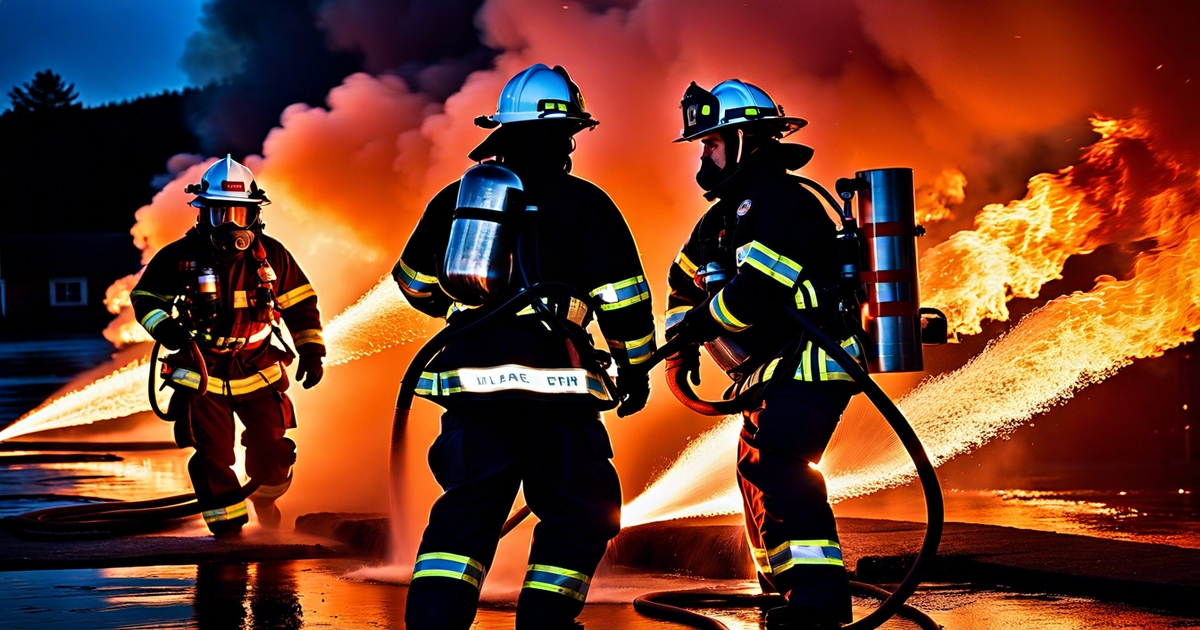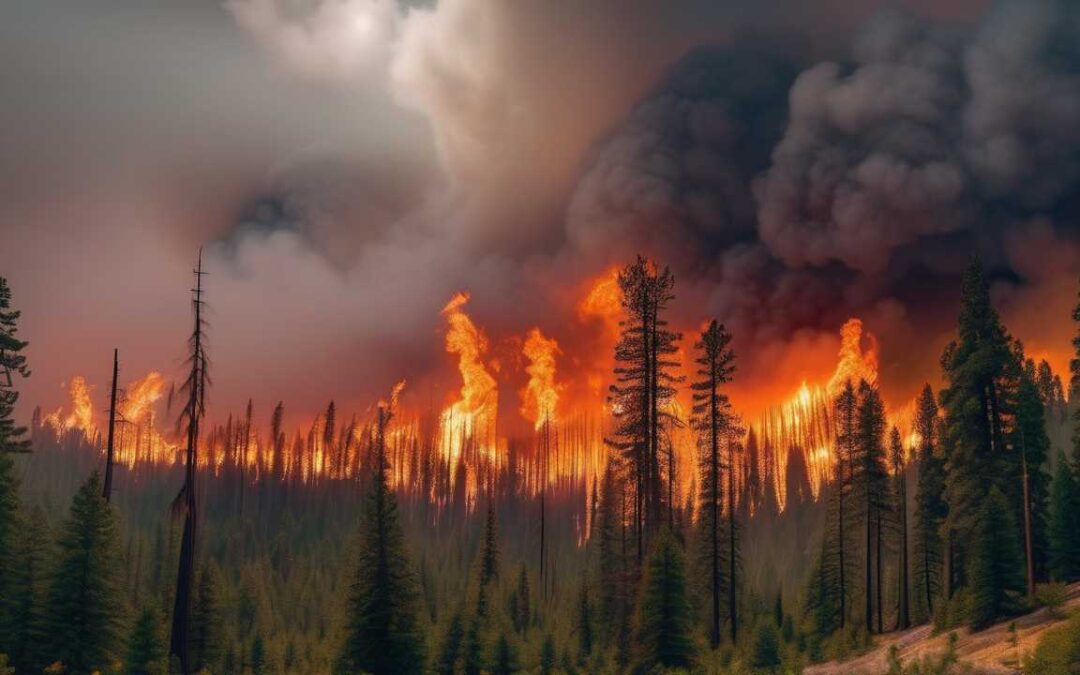The recent wildfire known as , one of the current wildfires and dangerous fires staying active, has ravaged an expansive territory in inland Northern California, surpassing 550 square miles in size. As of Sunday, the inferno has cast a pall of smoke and haze across the sky, significantly deteriorating the air quality across a vast region that includes the Northwestern United States and parts of western Canada.
Intense Wildfires Prompt Air Quality Alerts
In the wake of the wildfires spreading across the western regions of the United States and Canada, millions found themselves under advisories concerning air quality on Sunday. The Park Fire, recognized as the largest in California for the current year, has engulfed an area exceeding the size of Los Angeles, blanketing the atmosphere with smoke and contributing to the degradation of air quality over a substantial area of the northwestern U.S. and western Canada. The fire’s reach, fueled by dangerous fires and wildfires stay, has extended over 562 square miles (1,455 square kilometers) of inland Northern California, affected by wildfire smoke and unplanned fires.
Firefighters Gain Ground Amidst Challenging Conditions
Firefighting teams received some reprieve with the onset of cooler temperatures and increased humidity on Saturday, which enabled them to make headway against the dangerous fires and unplanned fires. The wildfire smoke diminished as the wildfires stay contained. The containment levels saw an improvement, rising from zero to 12%. This fire has evoked memories of the devastating 2018 Camp Fire, which obliterated the nearby town of Paradise, claiming 85 lives and destroying 11,000 homes, underscoring how wildfires stay a pressing concern. The incident has prompted discussions at the new wildfire wildfire summit about deploying additional resources to manage thousands of acres.
Evacuation Warnings and Firefighting Efforts in Butte County

Residents of Paradise and other communities within Butte County were advised to evacuate on Sunday. However, a glimmer of hope was presented by Cal Fire operations section chief Jeremy Pierce, who announced that the Park Fire’s southern front, nearest to Paradise, was under control. Fire crews were concentrating on extinguishing residual hot spots and clearing hazards, with no anticipated progression towards Chico, a city with a population nearing 100,000, located just west of Paradise.
Initially, the priority for first responders was the protection of lives and properties in the path of the Park Fire. This focus has now transitioned to a direct offensive against the new wildfire fires, as communicated by Jay Tracy, a spokesperson at the Park Fire headquarters. The firefighting force, nearly 4,000 strong and supported by helicopters and air tankers, welcomed additional reinforcements to provide relief to local firefighters who have been on duty continuously since the fire’s inception on Wednesday.
Visible Signs of Destruction and Ongoing Threats
In areas where the flames had subsided by Sunday, the destruction wrought by the fire was unmistakable. The remnants of daily life, such as mailboxes and vehicles coated with pink fire retardant, lay amidst the ruins left by fires. In contrast, other parts of the community remained untouched by fires, as reported by the Butte County Fire Chief, who assured ongoing patrols to prevent flare-ups within these “unburned islands.”
Managing evacuation protocols is a complex task, as highlighted by Butte County Sheriff Kory Honea. Plans to downgrade evacuation orders to warnings were thwarted by the emergence of new hot spots, demonstrating the unpredictable nature of wildfires.
Wildfires Rage in Southern California and Beyond
Further south, the Sequoia National Forest faced a wildfire that prompted evacuation orders for approximately 2,000 residents. The fire’s rapid spread was exacerbated by strong winds, consuming over 60 square miles in just four days. The National Weather Service issued a “red flag” warning for the area, signaling heightened fire risk due to dry conditions and gusty winds.
Extreme fire behavior was fueled by an abundance of desiccated vegetation, a consequence of prolonged dry spells following years of rain. The historic mining town of Havilah, along with other communities, has suffered significant impacts from the blaze. However, the full extent of the damage remains to be assessed.
Evacuation Orders and the Urgency to Heed Warnings
Thankfully, no lives have been lost in the Park and Borel fires to date. Nonetheless, some residents have chosen to ignore evacuation directives, thereby increasing the risk for themselves and others. Ignoring such orders and later seeking rescue diverts firefighters from their primary mission, which is particularly critical given the fire’s rapid spread and intensity.
Despite predictions of cooler temperatures through midweek, the presence of existing fires is not expected to diminish, as explained by Marc Chenard, a meteorologist with the National Weather Service’s Weather Prediction Center. The Park Fire alone has already destroyed at least 66 structures and damaged five more, with the potential for these numbers to rise as damage assessments continue.
Residents Face the Realities of Living in Fire-Prone Areas
Residents like Jerry White, who have experienced the horrors of fire firsthand, are taking evacuation warnings seriously. White, a 72-year-old Magalia resident, chose to evacuate promptly, recalling the severe pain from a past incident where he sustained third-degree burns. Despite the risks, White, along with others, remains committed to living in these fire-prone mountain communities, preferring them over other hazards like shark-infested waters.
The Park Fire’s origin is linked to an incident on Wednesday, where a burning car was allegedly pushed into a gully in Chico. An individual accused of starting the fire was apprehended and is expected in court.
Wildfires: A Persistent Challenge Across the U.S.
The Park Fire is but one of over a hundred wildfires burning in the U.S. on Sunday. Weather conditions and climate change are contributing factors, with an increase in lightning strikes and extreme heat exacerbating the situation. The National Weather Service has warned of “red flag” conditions across numerous states, indicating a continued risk for additional wildfires. Fires are also affecting areas in eastern Oregon and eastern Idaho, with the Gwen Fire covering an estimated 43 square miles as of Sunday.
As firefighters and communities grapple with the relentless challenge of wildfires, the resilience and determination of those affected stand as a testament to the human spirit. The ongoing battle against the flames and the efforts to safeguard lives and homes continue to be a priority for emergency responders and residents alike.
